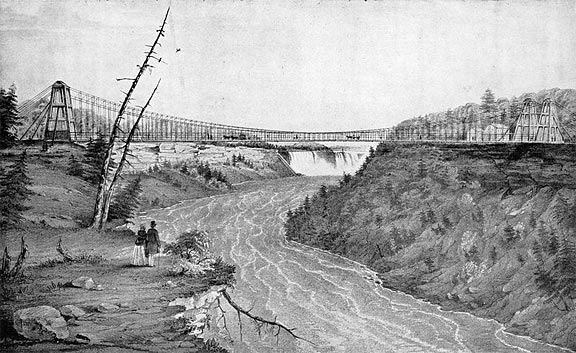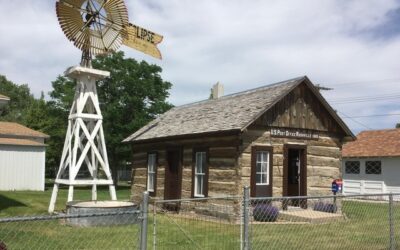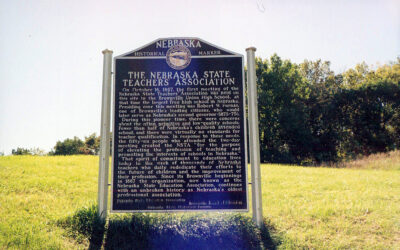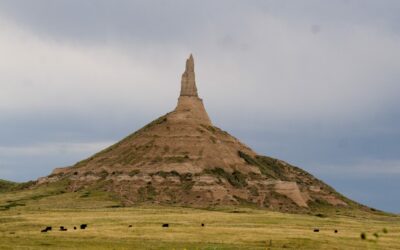When Homan J. Walsh died in Lincoln on March 8, 1899, local newspapers noted that he had been a thirty-year resident of the city, a real estate businessman, officer of the Lincoln Gas Company, and a past city council member. Of greater interest to Nebraskans, both then and now, was Walsh’s unique boyhood contribution to the building of the first suspension bridge over the Niagara River. The Nebraska State Journal, as well as other newspapers around the country, used the occasion of his death to recall the unusual story for readers.
In 1848 Walsh, then a boy in New York state, played a key role in the construction of the first suspension bridge across the Niagara River between the United States and Canada. In the fall of 1847 civil engineer Charles Ellet, Jr. of Philadelphia was commissioned to construct such a bridge at the narrowest point of the Niagara gorge, immediately above the Whirlpool Rapids. Ellet was about to begin when he faced his first obstacle. The building of a suspension bridge is begun with the stretching of a line or wire across the stream. However, the turbulent rapids, the 800-foot-wide gap, and the 225-foot-high cliffs of the Whirlpool Gorge made a direct crossing impossible.
It occurred to someone that a kite might be a way to bridge the chasm. Accordingly, a cash prize was offered to the first boy that could fly his kite, with a line attached, to the opposite bank. There was a tremendous turnout of American and Canadian boys for a contest held in January 1848. The first to succeed in spanning the gorge with his kite, named the Union, was a young American, Homan J. Walsh.
In order to take advantage of more favorable winds, Walsh crossed to the Canadian side of the gorge by ferry just below Niagara Falls, and walked the two miles along the top of the cliff to the bridge site. At midnight, when a lull in the wind occurred, he flew his kite high above the gorge, and it reached the American side. Then there was a sudden pull of the line, and it went limp. It had broken. To make matters worse, Walsh found himself marooned in Canada for eight days because river ice prevented the ferry from operating.
Finally Walsh was able to cross to the American side of the river and retrieve his kite. He then returned to the Canadian side, where he again flew the kite to the opposite bank. The kite string was fastened to a tree on the American shoreline, and a cord attached to it was pulled across. This time it didn’t break. Next came a heavier cord, then a rope, and finally a wire cable, which was the beginning of the new bridge, completed on July 26, 1848.

Charles Parsons created the above lithogram of Ellet’s suspension bridge, completed in 1848. From Richard Buck’s “The Niagara Railway Arch” (December 1898) in Transactions of the American Society of Civil Engineers 40.



